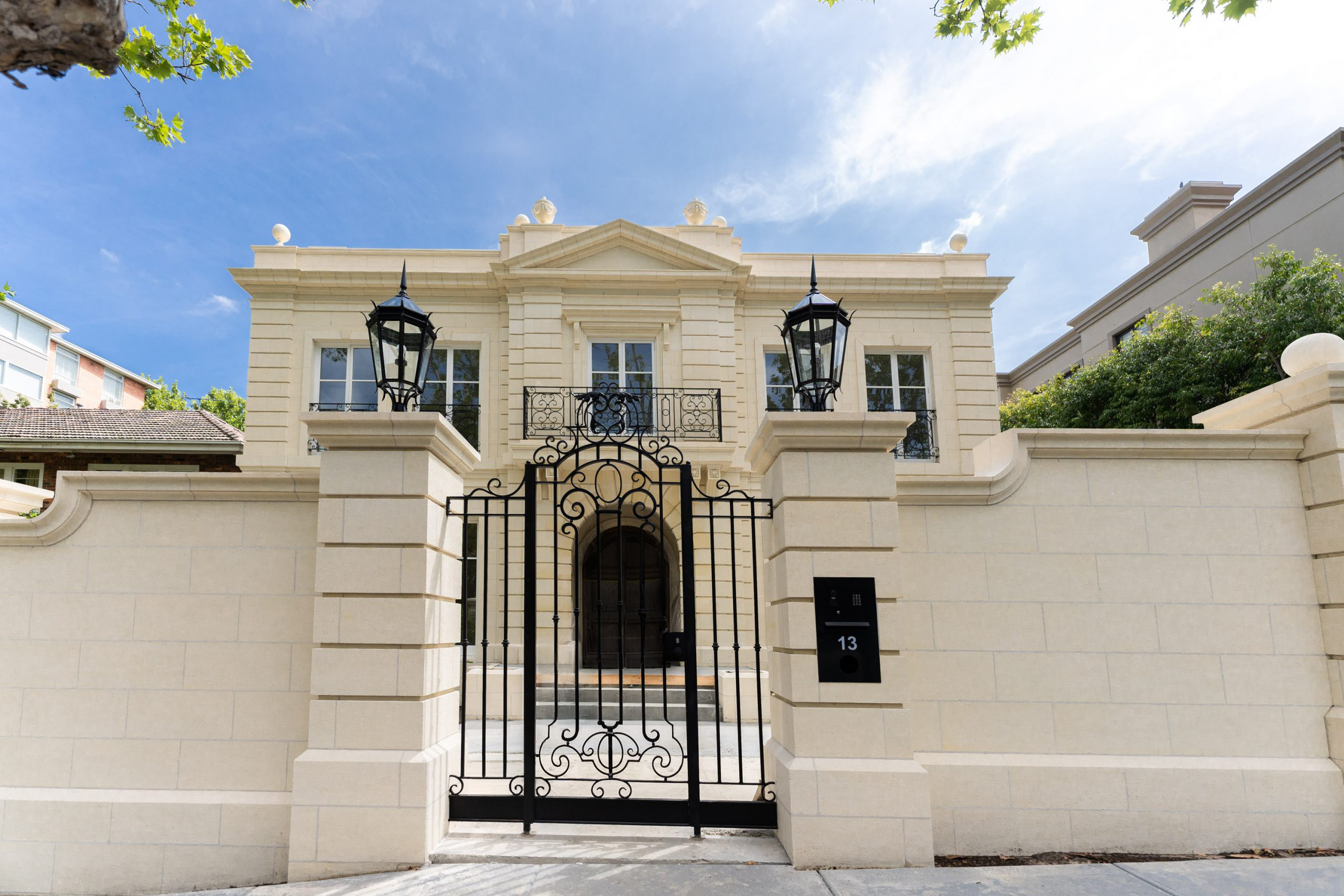Stone Buildings in the Australian Summer
Natural stone has been used for centuries in architecture, not only for its stunning aesthetic appeal but also for its functional benefits. In hot climates like Australia, stone structures can be used to help maintain cooler indoor temperatures, offering a natural buffer alongside modern insulating materials to extreme conditions.

Thermal mass: nature’s cooling and heating
Thermal mass refers to a material’s ability to absorb, store, and release heat[1]. Materials like natural stone possess high thermal mass, absorbing and releasing heat slowly, which helps to keep homes at stable temperatures.
In areas with a mixed climate that require heating during the winter and cooling during the summer, constructing buildings with high thermal mass materials can help with passive heating and cooling, lowering the costs of a building’s temperature control.
Let’s break the process down:
- Absorption – The sun’s heat is absorbed into the material during the day.
- Storage – Heat is stored within a material such as natural stone, which can retain thermal energy. As a result, the indoor temperature remains stable.
- Release – When the outdoor temperature cools, the material slowly releases the stored heat, maintaining a comfortable indoor temperature.
One main benefit of this process is energy efficiency. By stabilising internal temperatures, natural stone building materials can reduce the need for air conditioning and heating and potentially lower bills. Natural stone has been used for centuries and remains an effective way of naturally regulating temperature, staving off the summer heat, and keeping temperatures comfortable during winter.
Key benefits of building with natural stone
Natural stone is a fantastic building material. Beyond its lavish appeal, it offers practical advantages that have seen it used in construction across the centuries. In modern applications stone is both functional and aesthetic making it a fantastic material made to last.
Structurally efficient
An advantage of using stone over materials like concrete is that less stone is required to achieve the same structural benefits. Stone’s high density and compressive strength offer large load-bearing capacity, supporting heavy loads without deforming and maintaining structural integrity.
Stone is a fantastic option for foundations, walls, and columns, providing stability and support for decades.
Durability
Natural stone is designed to last a lifetime. It’s a durable material that can withstand fluctuating conditions, extreme temperatures, and exposure to the elements. However, some stones are more durable than others. It’s important that when selecting a stone for a building, you consider the hardness and porosity and consult with experts regarding your plans.
- Hardness refers to the stone’s resistance to corrosion. The harder the stone is, the less likely it is to be damaged.
- Porosity refers to the amount of void space within the stone. A stone with higher porosity will be more susceptible to liquids and abrasions.
Fire resistance
Natural stone is innately fire resistant, offering security against fire spread. This makes it an ideal construction material as it enhances safety in areas where there are higher chances of fires.


Regularly maintaining your natural stone
While stone is durable, it requires proper maintenance to preserve its appearance and keep it functional for many years to come. Regular cleaning and sealing keep the stone looking as fresh and clean as the day it was installed.
Need a refresher on how to care for your natural stone? See our Essential Summer Care For Your Stonework, and your natural stone will look as good as new in no time.
With the current quick-drying heat of the Australian summer, it’s the perfect time to maintain your stone before autumn. For professional assistance and expert advice, contact Wilmoore Allstone today.
[1]source:https://www.yourhome.gov.au/passive-design/thermal-mass





